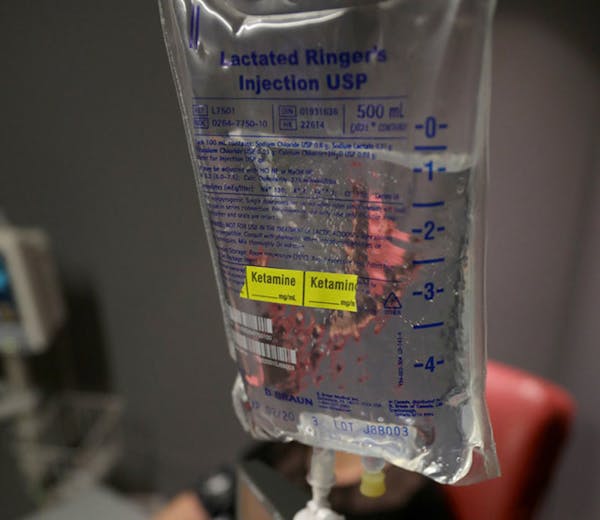In recent years, Minneapolis police have been increasingly asking medical responders to sedate people with a drug called ketamine, according to a draft report authored by Minneapolis police oversight staff and obtained by the Star Tribune.
In some cases, the people being drugged were already securely restrained, and the report questioned why the use of ketamine was necessary — and particularly why police appeared to be specifically requesting the drug. The findings led police command staff to issue a departmental memo telling officers they "shall never suggest or demand EMS Personnel 'sedated' a subject. This is a decision that needs to be clearly made by EMS Personnel, not MPD Officers."
Ketamine is a powerful anesthetic agent that induces a trance-like, sometimes hallucinatory, dissociative state.
Developed in the 1960s, it was approved for human use in 1970, and its common medical applications include pain treatment and sedation. Recent studies have found it could be useful in treating serious depression, especially when other drugs are not effective.
It is also a popular club drug, and Minneapolis police classify it among a list of "date rape drugs" for its ability to cause physical incapacitation and amnesia. Other side effects include severe confusion, dizziness and, in high doses, respiratory problems.
One 2015 study on its hallucinatory effects found moderate doses in a healthy patient "safely and reversibly causes delusion-like ideas, amotivation, and perceptual disruptions reminiscent of the aberrant salience experiences that characterize first-episode psychosis."
Another study found that when used properly the drug can be a safe and effective form of sedation that allows paramedics to safely transport a combative or agitated patient to the hospital.
Andy Mannix • 612-673-4036
Body camera video shows Minnetonka man shooting at deputies several times before dying in firefight
Charge: Driver going 77 mph ran red light, fatally hit man crossing St. Paul street and kept going
Minnesota Senate GOP files ethics complaint against Sen. Nicole Mitchell
High school archer focuses on target: another national championship

